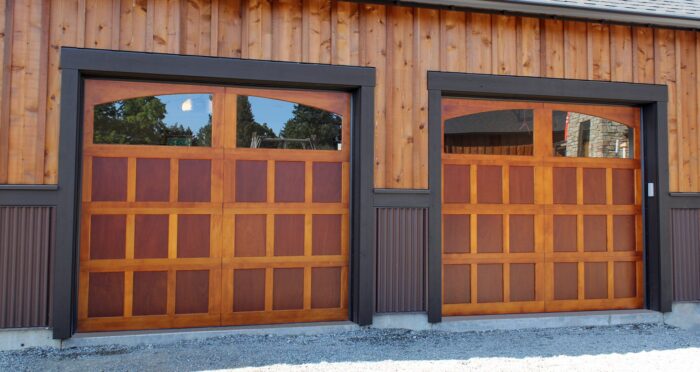As a dedicated DIY enthusiast, I’ve always been up for tackling various projects around the house. However, when my garage door lock started acting up, it was a new challenge I was eager to take on. A malfunctioning garage door lock can be a significant inconvenience and a potential security risk.

In referenced to Garage Door Repair Ontario CA, I’ll share my personal experience of fixing a garage door lock and provide a comprehensive guide, along with expert tips, to help you navigate and resolve lock-related issues in your own garage.
Understanding the Importance of a Functional Garage Door Lock
Your garage door lock serves as a crucial element in maintaining the security of your home. When the lock is compromised or malfunctions, it can lead to several issues:
- Security Concerns: A broken or malfunctioning garage door lock can pose a significant security risk, potentially making it easier for unauthorized individuals to access your garage and, consequently, your home.
- Inconvenience: A garage door lock that doesn’t function properly can cause inconvenience, as it may be challenging to open or close the door, and it can disrupt your daily routine.
- Peace of Mind: A working garage door lock provides peace of mind, knowing that your belongings in the garage are secure and that your home is protected from potential intruders.
Diagnosing Garage Door Lock Issues
Before you dive into fixing a garage door lock, it’s important to diagnose the problem. Here are some common issues you might encounter:
- Key Won’t Turn: If your key doesn’t turn in the lock, it might be due to a problem with the key itself or an issue within the lock mechanism.
- Lock Cylinder Sticks: If the lock cylinder is sticking and not turning smoothly, it can make it difficult to lock or unlock the door.
- Misalignment: Garage door locks can become misaligned over time, preventing them from engaging properly.
- Rust and Corrosion: Exposure to the elements can cause rust and corrosion, which can impede the functionality of the lock.
A Step-by-Step Guide to Fixing a Garage Door Lock
Now, let’s delve into the process of fixing a garage door lock effectively:
Tools and Materials:
Before you start, gather the following tools and materials:
- Safety goggles and work gloves
- A can of penetrating oil
- A wire brush
- A screwdriver
- Graphite lubricant
- Replacement lock components (if needed)
Step 1: Safety First
Safety should always be a top priority when working with garage door locks. Wear safety goggles to protect your eyes and work gloves to safeguard your hands.
Step 2: Inspect and Clean the Lock
Start by examining the lock for any visible issues. If the lock is dirty or has visible rust, use a wire brush to clean it thoroughly. This will not only help you see the problem more clearly but also remove any obstructions that might be hindering the lock’s function.
Step 3: Lubricate the Lock Cylinder
Apply a generous amount of penetrating oil to the lock cylinder. Allow it to sit for a few minutes to penetrate and loosen any stuck or corroded parts. Then, insert the key and gently turn it to work the oil into the lock mechanism.
Step 4: Test the Lock
After lubricating the lock, attempt to turn the key to see if it engages and disengages the lock as expected. If it works smoothly, you might have resolved the issue. If the lock still doesn’t turn or engages only partially, consider seeking professional assistance.
Step 5: Realign the Lock
Misalignment can often cause issues with garage door locks. If you suspect the lock is misaligned, loosen the screws that hold it in place and try to adjust its position so that it lines up with the strike plate on the door frame. Tighten the screws securely and test the lock again.
Step 6: Add Graphite Lubricant
To ensure long-term smooth operation, add graphite lubricant to the lock cylinder. Graphite is a dry lubricant that won’t attract dust and debris, making it ideal for locks.
Step 7: Consider Replacing Lock Components
If the lock is severely damaged, corroded, or otherwise irreparable, you might need to replace it. Consult the owner’s manual for your garage door or seek the guidance of a professional to determine the right replacement components.
Expert Tip: “Regular maintenance, including cleaning and lubricating your garage door lock, can prolong its lifespan and reduce the likelihood of unexpected issues.”
Conclusion
Fixing a garage door lock can be a rewarding DIY project, provided you approach it systematically and prioritize safety. My personal journey in dealing with a malfunctioning lock has taught me that a well-functioning lock not only enhances the security of your home but also ensures a smooth and convenient experience with your garage door.
Overall, as stated in Garage Door Repair Ontario CA, by following this step-by-step guide and applying the expert tips provided, you can take control of your garage door lock issues and enjoy peace of mind, knowing that your home and belongings are well-protected. However, if you encounter complex issues or are uncertain about the problem, it’s advisable to consult a professional locksmith or garage door technician for expert assistance. A functioning lock is a critical component of your home’s security and convenience, and it’s well worth the effort to ensure it operates smoothly.
Ontario Garage & Overhead Doors
1353 E 7th St, Ontario, CA 91764, United States
909-442-4206

